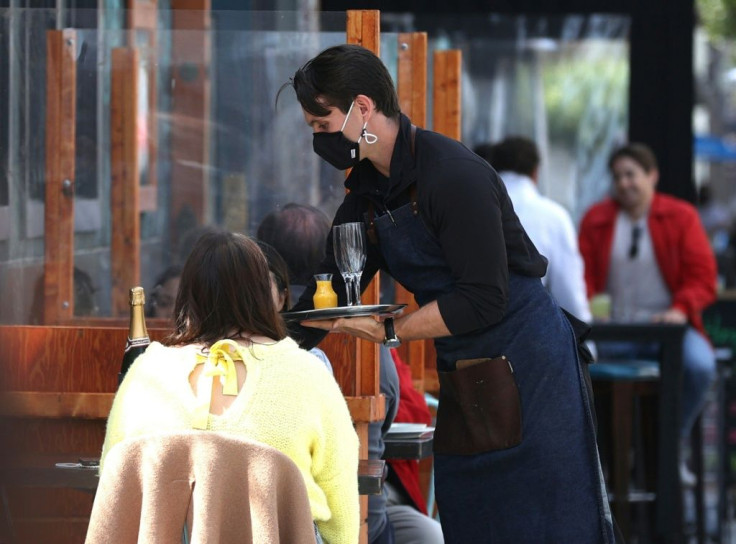US Inflation Begins To Climb, But Will It Last?
Inflation is moving higher in the United States, government data said on Tuesday, but economists say there's no cause for alarm yet, despite massive stimulus spending that's prompted worries of an impending price spike.
From Wall Street to Washington, politicians and traders have been bracing for an uptick in inflation as Covid-19 vaccines help the world's largest economy reopen, spurring demand for goods and services that were ignored as the pandemic upended daily life in 2020.
They're also monitoring the impact of massive spending measures the government approved to help the economy recover, including a $1.9 trillion relief package President Joe Biden signed last month.
Inflation remained muted throughout the pandemic but the expected uptick may have begun, with the Labor Department reporting its consumer price index (CPI) rose by a seasonally adjusted 0.6 percent in March, its biggest month increase since 2012.
That was 2.6 percent higher than March 2020, and fueled mostly by surging energy prices, particularly a 9.1 percent rise in gasoline prices.
"In the coming months, ongoing base effects and one-time price increases stemming from the reopening of the economy and some pass-through of higher prices from supply chain bottlenecks should continue to boost the pace of inflation," Kathy Bostjancic of Oxford Economics said, predicting it would hit a yearly rate of 3.5 percent.
"However, we share the Fed's view that the acceleration in inflation will be transitory and will not represent the start of an upward inflationary spiral."
After cutting its lending rate to zero as the pandemic began, the Federal Reserve called for more stimulus spending, arguing it would only cause a temporary increase in prices.
The Republican opposition and some Democratic economists have disagreed, saying the measures, particularly Biden's package that sent out checks to Americans and prolonged expanded unemployment benefits, would overheat the economy.

The issue is being closely watched on Wall Street, where equities have surged despite the pandemic, thanks to the low borrowing rates.
While the Fed has vowed to keep rates at zero until employment fully recovers from the pandemic's mass layoffs, traders fear a prolonged inflation uptick could cause them to raise rates sooner than expected.
On Monday, White House economists in a blog post said pent-up consumer demand unleashed as the economy reopens as well as pandemic-related supply constraints will indeed push prices up, but only temporarily.
While it is important to monitor inflation pressures, "it is equally important to recognize that economic 'heat' does not necessarily equate with overheating," Jared Bernstein and Ernie Tedeschi said.
"In the next several months we expect measured inflation to increase somewhat, primarily due to... temporary factors," but the rise will "likely be transitory, and... their impact should fade over time as the economy recovers from the pandemic."
Gasoline prices, which struggled as the pandemic caused drivers to stay home, was one of the biggest year-on-year gainers, rising 22.5 percent thanks to growing demand and an uptick in oil prices.
Food prices are also on the rise, with food away from home gaining 3.3 percent in the latest 12 months, according to the report.
Excluding volatile food and energy components, CPI in March rose 1.6 percent, year-over-year, with a 0.3 percent gain in the month.
Ian Shepherdson of Pantheon Macroeconomics warned that while the price increases seen last month and expected to continue in April may prove transitory, a sustained uptick would force the Fed to reverse its policy.
"Officials will call the increase in inflation 'transitory' and will push back hard against the idea that any sort of policy response is needed," he said in an analysis.
"That idea will hold for a while, but if the increase in inflation persists, and -- especially -- if it is accompanied by faster wage growth, then the Fed's line will become untenable."
© Copyright AFP 2024. All rights reserved.





















